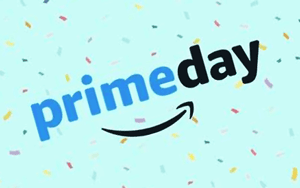 Amazon Prime Day is an annual sale event for Amazon members typically held in mid-July. Prime Day, though recently founded in 2015, quickly grew to one of retail’s biggest shopping days. In 2018, Prime Day brought in over $4.2 billion in sales, with 40 percent of consumers making impulse purchases. The sale includes Amazon’s private label brands, national brands, and independent sellers on the platform. To put the size of Prime Day into perspective, it is the fourth largest online shopping day in the world, following Single’s Day, Cyber Monday, and Black Friday.
Amazon Prime Day is an annual sale event for Amazon members typically held in mid-July. Prime Day, though recently founded in 2015, quickly grew to one of retail’s biggest shopping days. In 2018, Prime Day brought in over $4.2 billion in sales, with 40 percent of consumers making impulse purchases. The sale includes Amazon’s private label brands, national brands, and independent sellers on the platform. To put the size of Prime Day into perspective, it is the fourth largest online shopping day in the world, following Single’s Day, Cyber Monday, and Black Friday.
Prime Day is a huge success for Amazon: the sale brings in additional Prime members paying the $119 annual fee, and some of the most popular sale items are Amazon Echo devices. But, Amazon is not the only retailer benefiting from this invented retail holiday.
In response to Amazon’s tremendous success at creating a national shopping event out of thin air, other retailers have followed suit, creating their own sales events surrounding Prime Day. Last year, Target held a Target One-Day Sale around the same time as Prime Day, and saw a 129 percent lift in conversions, according to a report by McKinsey. Best Buy held a similar sale and saw a 98 percent lift in conversions.
There’s no question that Prime Day puts consumers in a spending mood. If you sell on Amazon, prepare to increase your advertising budget to make the most out of Prime Day. Retail Touchpoints reports that SMB Amazon sellers raked in more than $1 billion during last year’s Prime Day. For the most visibility, invest in advertising with sponsored products and with keyword search results. For the best chance of being featured by Amazon during the sale, choose just a few unique or best-selling products to sell at a deep discount.
Even if you do not sell on Amazon, there are still plenty of opportunities to use Prime Day for product promotion. Retail Touchpoints also reports that small, independent brick and mortar retailers saw a four percent increase in sales nationwide during Prime Day, with some New England areas seeing increases as high as 43 percent.
Typically, mid-July is not a period with high consumer demand. However, Prime Day has pushed back-to-school shopping to start a whole month earlier. Many consumers also use Prime Day as an occasion to buy electronics, appliances, and other gadgets they might otherwise wait until Black Friday to purchase. Prime Day also boosts apparel and accessory sales.
According to Marketing Dive, instead of taking dollars away from other shopping occasions, Prime Day shoppers spend more overall, including 17 percent more at brick and mortar stores. To take advantage of the momentum, indie retailers should advertise sales and promotions throughout July for apparel, accessories, home items, and back to school products.
